Not every tree loves full sun or dry soil, which is why it's great to have a list of trees that like wet soil and shade. If you have that type of environment where you're looking to plant, this list should help. We've put together a list of eleven gorgeous trees that like wet soil and shade. These trees will thrive in these environments in a way that other plants may not. So let's take a look at each of these beauties and see if one is right for your garden or lawn.
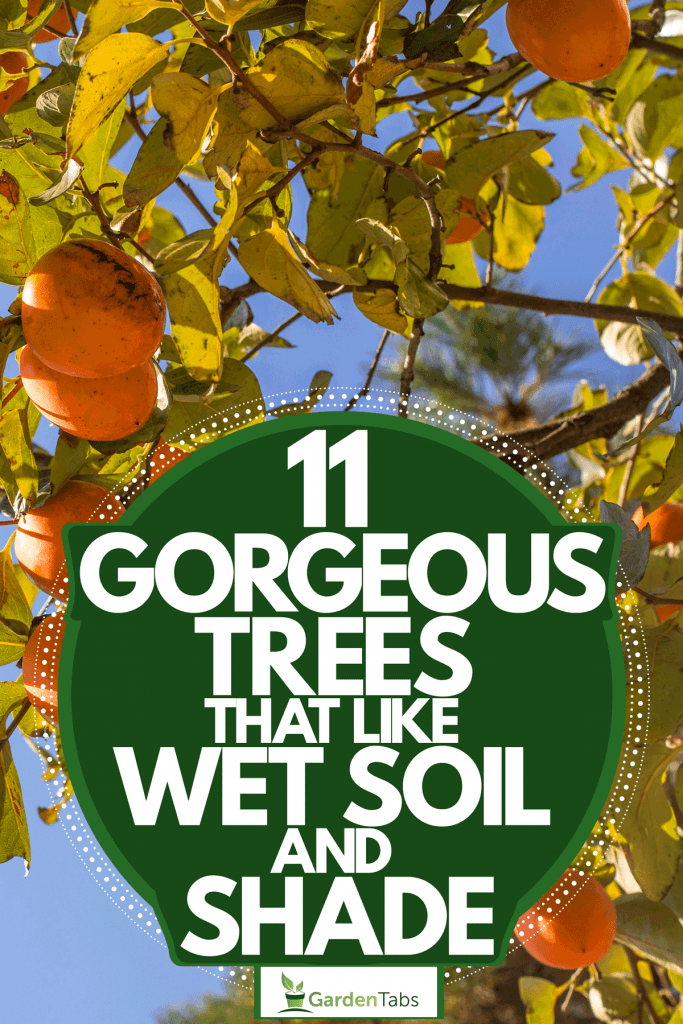
1. Tupelo Tree

The tupelo tree, also known as black tupelo or black gum tree (Nyssa sylvatica), is best known for its stunning fall foliage. The bark, with its reptilian appearance, is also distinctive.
Its spring blooms aren't terribly interesting but don't tell the bees that. They'll be appreciative of its blossoms and do their job of pollinating. This tree grows well in moderately wet soil partial shade, though it needs at least four hours of sun daily.
2. Weeping Willow
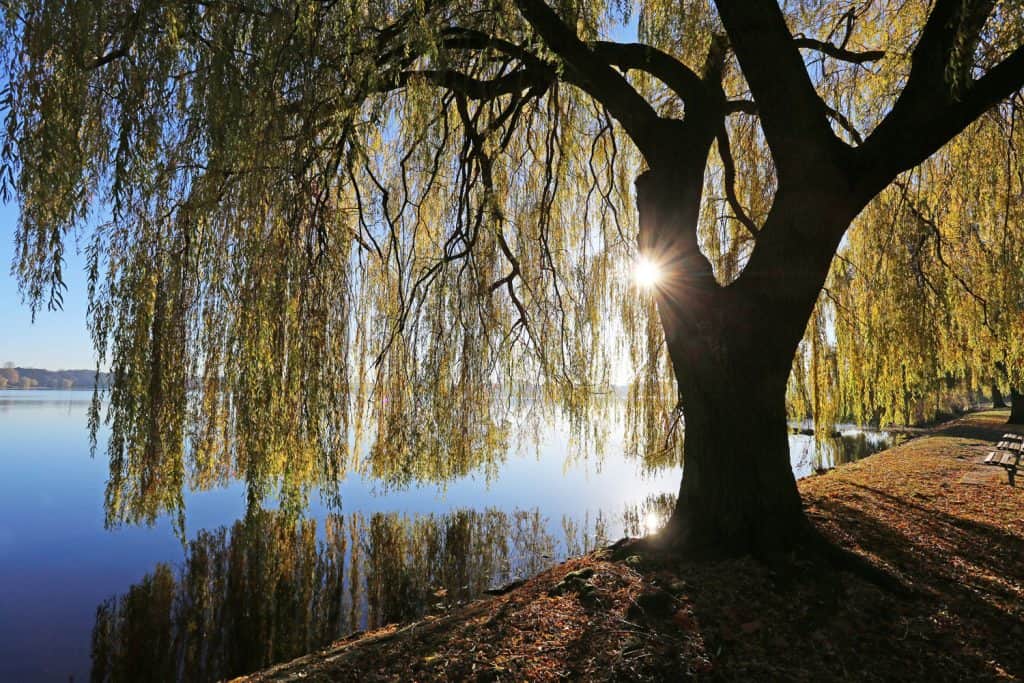
Weeping willows (Salix alba) are such gorgeous trees. They grow quite large, 75-100 feet tall and 50-75 feet wide, and are recognizable with their draping willowy branches covered with soft greyish green leaves.
These are trees that do love to have their feet wet, and they'll seek water (so no planting near septic systems). Though they do fine in full sun, they will also tolerate partial shade as long as they have at least four hours of sun during the day.
3. Pond Cypress
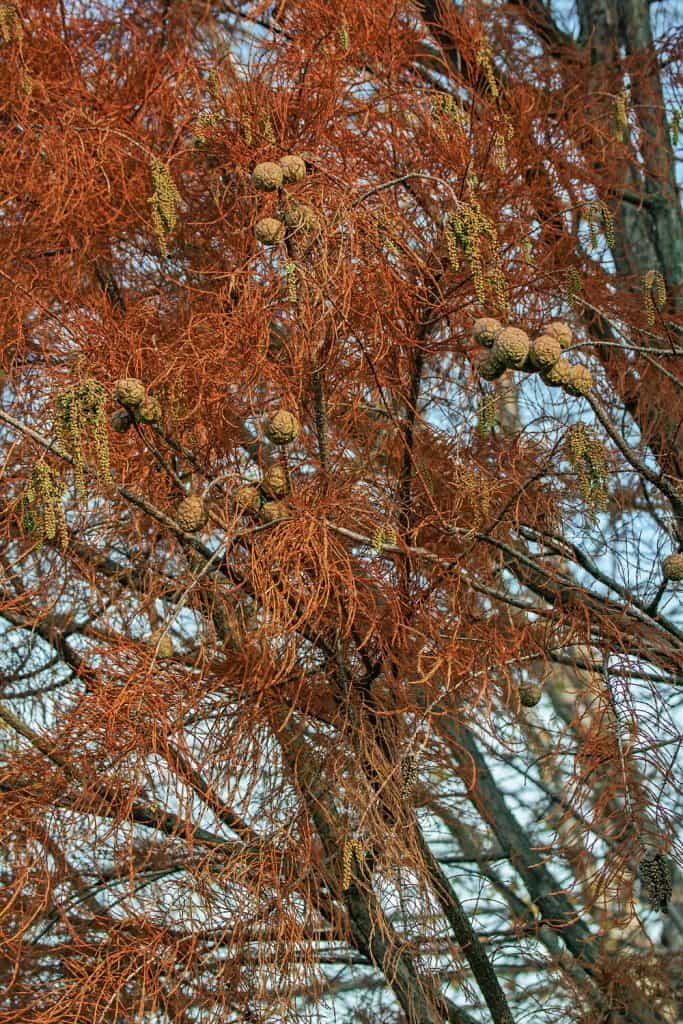
Pond Cypress or Bald Cypress (Taxodium distichum) is a deciduous tree that loves to have wet feet. They can grow anywhere up to 30-70' tall, depending upon the amount of moisture they are planted in.
Cypress trees grow very fast and can be used as a border along a creek or pond. They do well in part-sun but won't thrive in deep shade. Its soft needles are sad to resemble bird's feathers making this a unique and beautiful tree.
4. River Birch Trees
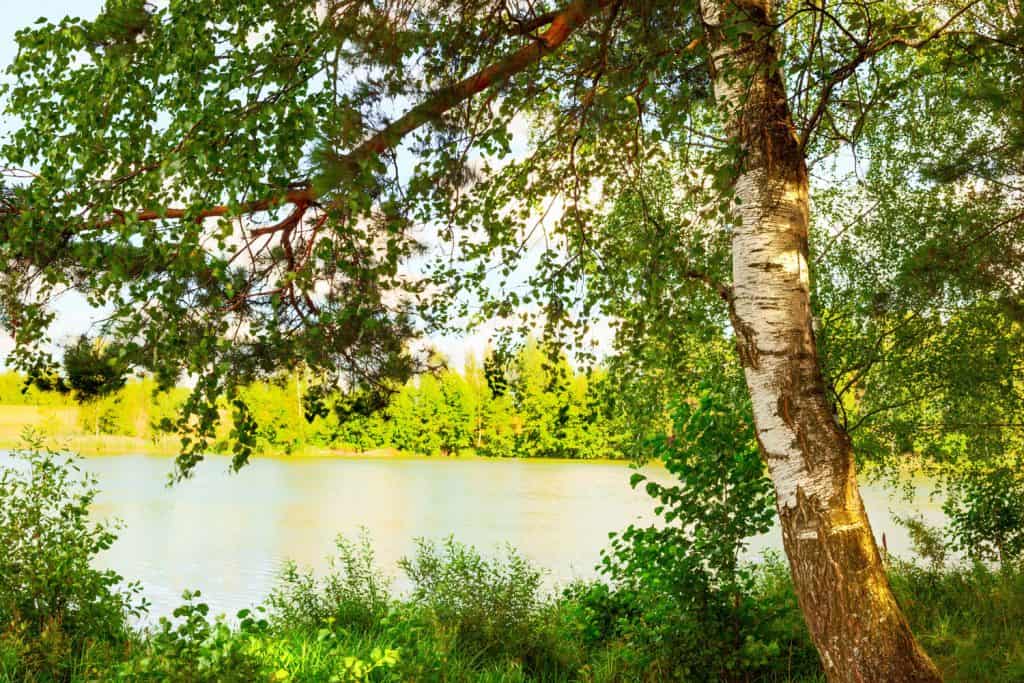
The beautiful River Birch (Betula Nigra) is a lovely, fast-growing tree that does well in moist soils.
Its shedding bark has tones of salmon and soft cream and gives it such a unique appearance. This bark also provides interest throughout all seasons, not just when the tree is in leaf.
River Birch can handle partial shade and likes moist roots. At maturity, it will reach heights of 40-50'.
5. Buckwheat Tree
The Buckwheat tree, also known as Chipolo Pink (Cliftonia monofilia), is a somewhat unknown flowering tree. Native to North America, it grows well in shaded and dappled sunlight.
It is often mistaken for Wax Myrtle, but it is not the same plant. This small tree will grow to about 15' tall and spread to as much as 8'. This makes it a perfect tree near the edge of a larger woods area or clustered with larger shade trees. It can also be used as hedges.
Though this small tree likes moist soil, it is one of the more drought-resistant water-loving plants.
6. Downy Serviceberry Tree
The Downy Serviceberry (Amelanchier arborea) is known for its snowy white blossoms in the springs and berries that attract birds like cedar waxwings.
It has a growing habit similar to dogwoods, with flowers blooming on bare stalks in the spring and an elegant trunk and limbs. It's often found natively in dry to damp woodland areas and grows well in the understory. However, it can thrive as a landscape plant in many portions of your yard.
Given the right conditions, it can grow 20-50 feet in height. That said, it's a relatively short-lived tree only living for about 50 years.
7. Thornless Honey Locust
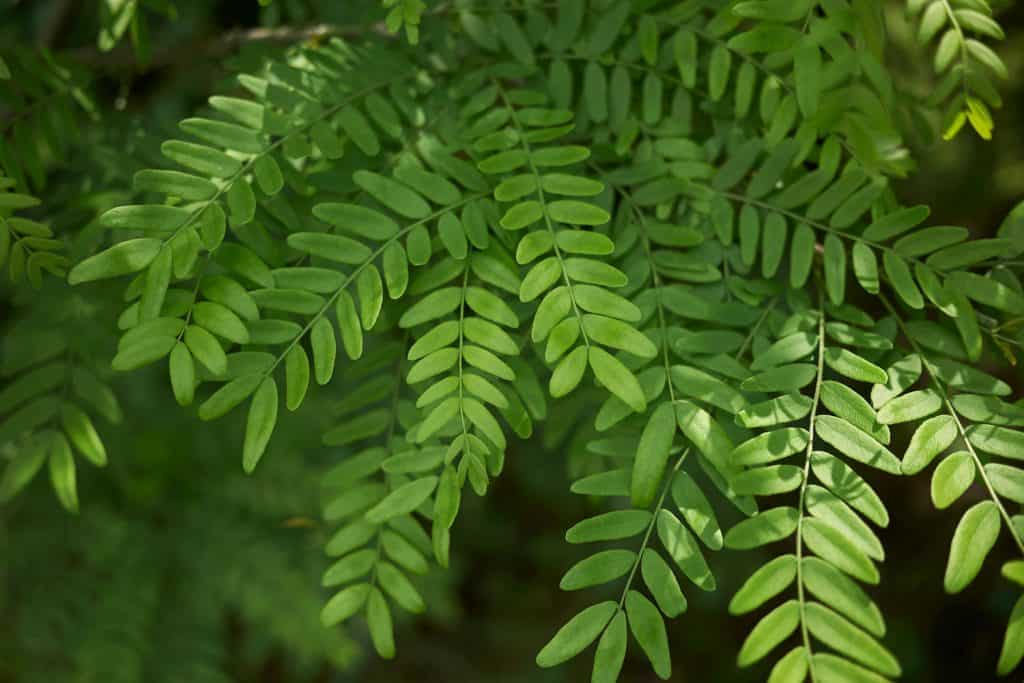
The Thornless Honey Locust tree (Gleditsia triacanthos f. inermis) has gorgeous leaves that cast a lacey pattern with their shadows. It's a super tolerant plant that will tolerate everything from over wet soils to a touch of drought. It can even hold up to road salt in the winter months.
The native species have large thorns, so this cultivar is the more popular choice for home gardens and plantings.
Though it does like sun, it can also be planted in partial shade. Typically these trees get to be about 30-70 feet tall, though expect shorter overall heights when planted in shadier areas.
8. Common Persimmon Tree

The Common Persimmon tree (Diospyros virginiana) is a low tree that bears edible fruit. These trees are a bit shrubby in nature and reach only about 15' tall at maturity if grown in poor soil.
In the rich, moist soil it loves it can grow as high as 100'. The fruit, similar in taste to dates, attracts all kinds of wildlife and birds when ripe.
These trees do well in rich, moist soil and prefer to be partially shaded. Keep in mind that two of the trees are necessary to be able to produce fruit.
9. Common Hackberry
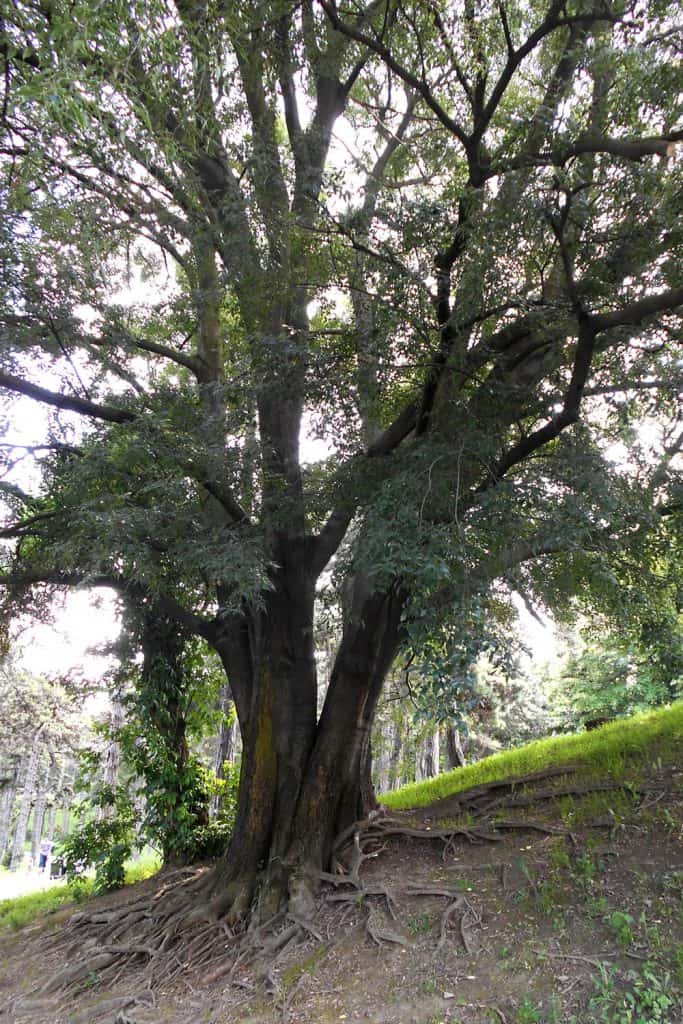
The Common Hackberry (Celtis occidentalis), also known as American Hackberry, Beaverwood, False Elm, and Nettle Tree, is a wonderful shade tree. It has a huge variance in height, growing anywhere from 30' to 130' tall.
It is best grown in moist, rich, well-drained soils and will tolerate part shade, wind, and pollutants but doesn't do well with salt-water exposure. The branches can tend to droop.
These trees can live 150 to 200 years. It gets rich reddish-purple berries in the fall that are attractive to birds.
10. Lacebark Elm
The Lacebark Elm tree (Ulmus parvifolia) is a large, beautiful tree. It is distinctive because of its peeling bark that has tones of oranges and pinks. Its dark green leaves turn purple in the fall, which is a real stand out against the color of its trunk.
It needs only partial shade and at least four hours of sunlight a day. And though it doesn't like super moist soils, it is fairly flood resistant and tolerant. This tree works well in hard-to-grow spots because it's tolerant of so many different conditions.
It produces a spring fruit that is attractive to birds.
11. American Hornbeam
The American Hornbeam (Carpinus caroliniana), also known as Ironwood, is a deciduous tree that prefers shady locations. It can be found naturally in areas with moist soil, including streambanks, riverbanks, and coastal forests.
The bark of this tree is a beautiful smooth gray to grayish-green color. As the common Ironwood name suggests, the extremely hard wood of this tree will take a horn-like polish and was once used by early Americans to make bowls, tool handles, and ox yokes.
It grows 20-30' tall, but keep in mind that it's a difficult tree to transplant successfully once planted.
There Are Trees For Every Location
As you can see, there's no need to be concerned that you won't find something beautiful for a shady and moist location. These eleven trees are only the start of what you may find in that category.
From flowering to classic, shade trees will go a long way to make your grounds gorgeous.
If you enjoyed this post here at GardenTabs.com, please check out a few of our others below:
14 Plants For Shallow Soil And Shade That You Should Try
15 Tall Shrubs For Shade That You Need To Try In Your Garden
